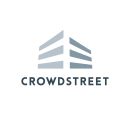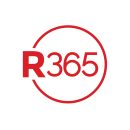There have been a lot of changes in work culture in the last couple of years: People have revisited their life priorities and they want their employer’s policies to reflect their needs and desires. To add to the challenge, not every employee is going to want the same thing — some people find remote work to be a deal breaker, while others are more comfortable socializing and collaborating in an office.
In the end, everyone has the same goal: Satisfy the needs of both the business and the employees as much as possible.
In 2022, employers might accomplish that goal through open, empathetic communication. By listening and working together, it’s frequently possible to come to a solution that accommodates everyone.
Plenty of exceptional leaders already know that empathetic leadership is deeply intertwined with the future of work in 2022, and have dedicated themselves to increasing their employees’ well-being. Built In Austin sat down with leaders from Acrisure Innovation, CrowdStreet, Flo Recruit, Restaurant365 and Squire to learn how they are preparing for 2022 by assessing and implementing what works best for their team.
What is one key work trend that emerged this year that you predict will continue to gain momentum in the year ahead?
One trend that I have really come to appreciate is seeing our teams prioritize the health and well being of their families above all else. We have realized that collectively, we are strongest when we support our extended families together. No deliverable, no deadline and no executive meeting is more important than our health — both mental and physical. I think just knowing that my coworkers and the leadership care about each other in that way is an enormous relief in stressful times. I hope to see this trend continue next year.
We have realized that collectively, we are strongest when we support our extended families together.”
How has your company adapted over time to the workplace shifts brought on by the pandemic? What permanent impact has that had on the way your team works?
A lot of companies feel strongly about having everyone in the office, but we’ve learned that co-location isn’t always necessary. There are some tangible benefits from working side by side with your team, and there are benefits from allowing your team to work from their own space. We need to think about the value of each situation without forcing a one-size-fits-all mentality.
Since the lockdown, some people have relocated to new cities. Others, like myself, took to traveling around the country in a van, working from wherever they roamed. Our eyes were opened to how adaptable we could be under the circumstances. This has strengthened our trust and accountability for each other.
We have much more to figure out. How do you recreate the social benefits of co-location? How do you foster or support the micro-mentorship opportunities like asking quick questions or overhearing someone else’s impromptu problem-solving session? We are still working out the details of our permanent long term solution — but in the meantime, we are taking advantage of the situation to develop new ways of connecting.
As you head into the new year, what do you envision for the future of work?
I think the expectation of everyone being full-time on site is a thing of the past. We have to take the best of both worlds and combine them in new ways that are both effective and bring value to the business.
Companies and the people who work for them should be doing an ROI analysis to understand what makes the most sense. How much are we spending on lease, furniture, food, parking and other in-person expenses? What value do we derive from these things? What is the cost of going to work — commute times, limitations on available candidates in the area and so on? What is the impact of being in the same room or building with our colleagues? Does that impact vary based on someone’s level of experience or role? With a variety of answers to those questions, companies could figure out solutions that maximize value for their situation.
For now, we are continuing to allow people the choice of working remotely or in the office. We recently brought everyone together for a two-day onsite and a series of dinners and special events. For many, it was the first time they had met face to face. It was a wonderful experience and something we hope to reproduce on a recurring basis moving forward.
What is one key work trend that emerged this year that you predict will continue to gain momentum in the year ahead?
As we continue to navigate our workplaces and the pandemic simultaneously, it is critical to build and sustain meaningful connections. For people within CrowdStreet’s work where you work best (W3B) environment, we’ll connect through the foundation of our shared core values — collaboration, impact and respect — and with the prioritization of equity and inclusion.
Connections between people aren’t just the icing on the cake — connections are the substance that allows us to build culture, drive positive impact and create meaning in our work. Our people and the teams they form all have different needs and fluency in connecting with each other. We don’t all work and connect in the same way, so we need different modes for connecting.
Do you love your daily stand-up meeting? Is seeing photos of your colleague’s recent mountain hike on a busy adventure club Slack channel your jam? You might attend a weekly 10-minute guided meditation with your team over Zoom. Quarterly in-person team gatherings or an annual in-person gala might be energizing for you. Providing avenues for meaningful connections is business-critical — because people and how they engage with one another are critical.
How has your company adapted over time to the workplace shifts brought on by the pandemic?
Before the pandemic, our company encouraged all employees to come to the office five days a week. We understood in-person work to be integral to our collaborative culture and valued face-to-face interactions when possible. We quickly adapted and found ways to connect our employees during the pandemic in meaningful interactions that supported our collaborative culture.
We quickly shifted to W3B. Like most companies, we’ve leveraged tools like Zoom, Google Meet and Slack huddles to shrink the miles and encourage virtual face-to-face connections. W3B has worked so well for us that we’ve permanently adopted it.
We’ve introduced new benefits as a result of W3B. We now provide a monthly stipend of $150 to every employee to support everyone’s unique W3B arrangements — whether it’s a fabulous ergonomic office chair for your home office, the cost of a co-working space or funds toward commuting costs for those who prefer to work in one of our two office locations.
Our team continues to develop fluency in representing ourselves and understanding others using all kinds of systems, products and tools.
At CrowdStreet, we’re excited about salary transparency.”
As you head into the new year, what do you envision for the future of work?
On the horizon, we’ll see progress on effectively working within hybrid and distributed models, the impact of technology on roles and the nature of how we work, hiring to withstand market turbulence and addressing antiquated notions of efficiency and employee wellness as a core value
There are also some developments, like pay on demand, that are concerning. On the surface this sounds like an exciting idea, but further exploration surfaces the risk of turning employers into pay-day loan providers.
At CrowdStreet, we’re excited about salary transparency. We recently outlined our approach to listing compensation targets in job postings and are on track for implementing this approach in Q1 of 2022.
We choose to post the target salary for our jobs. We do this to foster a culture of transparency, correct for historic compensation inequity and set clear expectations with candidates. If your salary expectations are beyond what we have listed and you’re excited about CrowdStreet and our role, please apply. We welcome the opportunity to get to know you and make corrections to ranges misaligned with the market.
What is one key work trend that emerged this year that you predict will continue to gain momentum in the year ahead?
It’s abundantly clear that the future of work is hybrid — both in person and virtual. Nearly 80 percent of employers say that the hybrid model will be their norm 12 months from now, according to a recent survey done by SHRM. Employees love the flexibility provided by remote work, but miss the camaraderie created at the office in an in-person environment.
We at Flo Recruit believe the most effective organizations will realize the best balance between in-person and virtual differs between functions. For instance, engineering teams will find it better to work remotely the majority of the time and reserve their in-person activities for brainstorming, feature planning and team building. Inside sales teams might find it more effective to shift the balance to more in-office work to create better real-time collaboration on objection handling after a demo.
What’s clear, however, is that every team does want some remote work — and we’re confident employers will provide it. If not, employers risk losing talent to more progressive competitors.
Every team does want some remote work — and we’re confident employers will provide it.”
How has your company adapted over time to the workplace shifts brought on by the pandemic?
We’ve shifted entirely to a hybrid model where the cadence at which employees come into the office differs both by team and personal preference. We’ve also made team bonding more intentional with the goal of creating structure for individuals to create relationships within their teams and across teams. For instance, we do a once per month in-person all hands in which everyone works out of the office. That day is loads of fun because we all get to see each other and check in on the team’s successes and challenges.
Additionally, on Monday afternoons we bring the team together virtually for 30 minutes to answer a fun question. Everyone splits out into breakout rooms to answer the prompt. It’s a quick way to create opportunities to get to know each other — which is especially important when in-office chatter might not be as common and our team is growing rapidly.
As you head into the new year, what do you envision for the future of work?
We’ve seen a huge shift across industries in people’s ability to create relationships and foster trust over video chat. In our world of recruiting, employers used to believe that a candidate could not be fully assessed without meeting them in person. Now, employers have become comfortable with evaluating and hiring candidates completely online.
We’re seeing the same shift affect sales — large, strategic deals can be closed over video chat because people have become more willing to trust folks they’ve only ever met online. That’s an exciting shift that broadens inside sales teams’ capabilities — however, we at Flo Recruit know in-person interaction is hugely impactful for deepening relationships, so we’re thinking critically about when our team needs to be remote and when they need to be in person to succeed as a company.
Ultimately, the advances video chat has made in latency and video and audio quality has opened up a whole new era of connection. This only expands the increasingly global nature of our workforce and buying habits. Employers will win by mixing in-person and virtual for the best employee and client experience that maximizes flexibility with relationship building.
What is one key work trend that emerged this year that you predict will continue to gain momentum in the year ahead?
I think that distributed teams are here to stay. Tech companies have learned that there’s no reason all their employees need to be in the same city. Also, most companies will have a hybrid work-from-home policy.
How has your company adapted over time to the workplace shifts brought on by the pandemic?
Squire was distributed before the pandemic. However, the pandemic has shown us how much our employees appreciate working in person as well as remotely. We decided to invest more in office space hubs so our employees can have the option to work in person when they want to.
We decided to invest more in office space hubs so our employees can have the option to work in person when they want to.”
As you head into the new year, what do you envision for the future of work?
The future will be really exciting! Many white collar employees will be able to collaborate remotely with AR technology or even in the metaverse. Small business service providers like barbers will always have to perform their work in-person — however, in the future they will have access to technology that will operate more efficiently and provide better experiences to their customers. I like to think Squire and other vertical software companies are helping bring that reality to life.
What is one key work trend that emerged this year that you predict will continue to gain momentum in the year ahead?
The overarching, lasting effects of the Covid-19 pandemic are still unknown, unquantifiable and mysterious. However, what we do know is how companies like Restaurant365 pulled together — in a blink of a second — an entire workforce strategy and unknowingly implemented aspects of change management that are now considered work trends. Foreseeably, people want the right job — for the right reasons, the right environment, the right package, the right balance and the right culture — and we as employers must get that right. People, holistically, want to be valued, acknowledged and supported throughout all aspects of their lives. Work is just a part of that.
The unknowns of the pandemic offered an odd sense of solace and reflection — and for many, putting their holistic self first rose to the top. Employers need to lean into this concept and invest in the whole person. If we ignore this particular trend, the entire employee lifecycle will have a negative impact. Employees want to bring their best self to work. Let’s invite them.
Employees want to bring their best self to work. Let’s invite them.”
How has your company adapted over time to the workplace shifts brought on by the pandemic?
Our business was able to quickly pivot to a virtual environment with minimal operational disruption. The health and safety of our workforce remained — and still is — our top priority. Creativity was essential during this unique time — employees craved stability, familiarity and a sense of security. A well thought out communication strategy helped employees understand key business priorities and team dynamics — and they became more efficient because of the intentional interactions. Because of this shift, employees gained a deep sense of business acumen by comprehending business complexity and dependencies. At Restaurant365, our core values are shaped by desired behavior — we continually and relentlessly seek greatness through solving problems, together.
As you head into the new year, what do you envision for the future of work?
The health and safety of our workforce are our top priority. Future work will incorporate our hybrid model with a continued hyper-focus on business, client success and helping restaurants thrive. Our three offices — located in Irvine, Austin and Petaluma — welcome those that would like to gather and need a spot to work from. When we are ready, Restaurant365 will solidify our highly engaged hybrid model.















